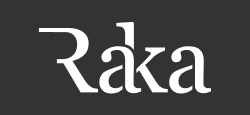By now, you’ve most likely seen this video from Veritasium. Titled “Facebook Fraud,” it has racked up nearly a million views at the time of this article. If you haven’t watched it yet, please do. It’s worth it:
Facebook Ad Fraud
There’s a lot of information to sift through in the video. The main conclusion is that if you pay Facebook money for targeted advertisements, you expect to receive legitimate, engaging accounts in return. But this video suggest otherwise.
Let’s back up a little.
Ethical vs. unethical Facebook Likes
There are two main ways to leverage money to get Likes for your Facebook Page. The ethical way (through Facebook Advertisements), and the unethical way (buying Likes from services such as Boostlikes). Sites like Boostlikes utilize click farms in developing countries like India, Philippines, Nepal, and others. While these are 100% real Likes (like their website says), they’re also 100% useless.
Throughout the video, the narrator explains how they acquired likes for their experimental Virtual Cat page from click farms. The problem? They promoted their page through Facebook, not through a service like Boostlikes (there are more in-depth details in the video).
The video ends with a conclusion that Facebook ads just aren’t worth it anymore. (Noted Facebook blogger Jon Loomer suggests otherwise.) While there may be a time in the future when Facebook has completely failed marketers, there are a few steps you can take right now to help out your advertising.
How to avoid becoming the next virtual cat
Marketers should know better by now. While Facebook needs to do a better job validating Likes that are being delivered through advertisements (this is assuming that they aren’t delivering bad Likes on purpose), there are in-depth advertising tools at our disposal to influence your outcomes. Here are three Facebook advertising tools you should be familiar when setting up your ads.
Custom audiences
According to Facebook, custom audiences:
“Custom Audiences let advertisers find their existing audiences among people who are on Facebook. You can use the ads create tool or use Power Editor to create a Custom Audience.
You can create a Custom Audience representing any group of customers or prospective customers that you’d like to reach with targeted Facebook Ads. For example, you could run a campaign to get more Likes for your Page that is targeted at current customers who haven’t Liked your Page.”
You can upload data for a custom audience using email addresses, phone numbers, Facebook user IDs, and more. This is an incredibly powerful tool that you can use to narrow down your targeted ads to a more legitimate pool of people.
Lookalike audiences
When you create a custom audience, you have the options to also create a lookalike audience. These audiences “let you reach new people who are likely interested in your business because they’re similar to a customer list you care about.” Facebook explains further:
“When you use custom audiences, you can choose to create a lookalike audience that targets people who are similar to your custom audience list. Lookalike audiences help you reach people who are similar to your current customers for fan acquisition, site registration, off-Facebook purchases, coupon claims and brand awareness.”
You can also specify which country to include when creating a lookalike audience, which is helpful in targeting a smaller group of people (and fewer click farm accounts).
Partner audiences
Partner categories are a way to target and reach specific people based on their activity off of Facebook. For example: If your company deals with photography, you can target your ads to people who may be interested in buying a camera soon based on their activity off Facebook (such as visiting photography blogs or a Nikon/Canon website). This is a great way to hone in on potential customers for your product or service.
It’s no secret that creating a successful advertisement campaign on Facebook is getting harder every day. Sure, it’s easy to buy Likes. It’s also easy to pay for a generic Facebook campaign to receive likes just for the face value of them. What isn’t so easy is taking the precautionary steps to ensure a better outcome.
To make sure you understand your target audience, you should re-evaluate your buyer personas, figure out who your target market is, and start to utilize Facebook’s more powerful ad campaign tools. There’s no 100% fool-proof way to eliminate fake Likes from your Page. What is possible, however, is to take the time and use these tools in order to decrease that risk.


